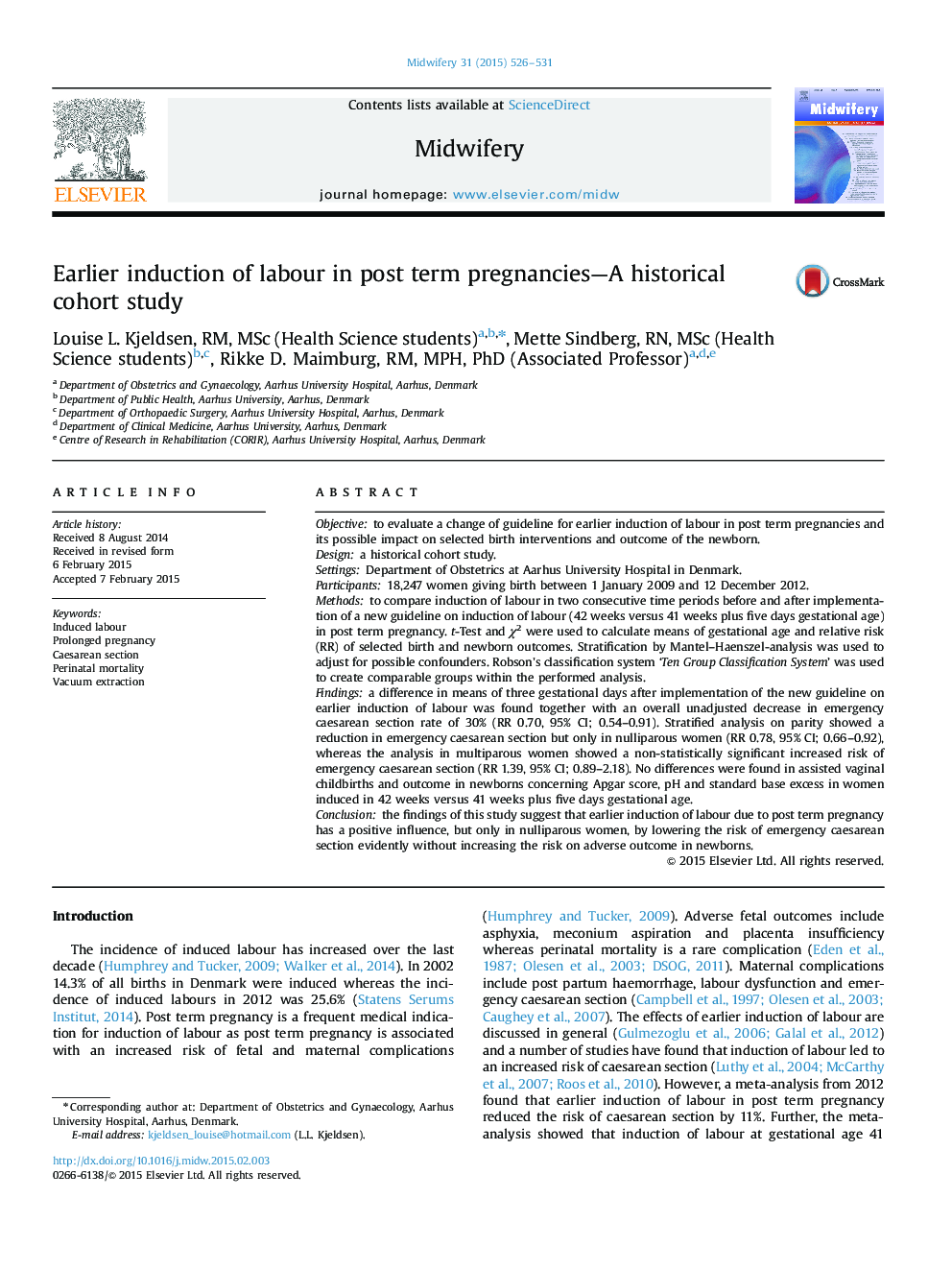| Article ID | Journal | Published Year | Pages | File Type |
|---|---|---|---|---|
| 1084518 | Midwifery | 2015 | 6 Pages |
Objectiveto evaluate a change of guideline for earlier induction of labour in post term pregnancies and its possible impact on selected birth interventions and outcome of the newborn.Designa historical cohort study.SettingsDepartment of Obstetrics at Aarhus University Hospital in Denmark.Participants18,247 women giving birth between 1 January 2009 and 12 December 2012.Methodsto compare induction of labour in two consecutive time periods before and after implementation of a new guideline on induction of labour (42 weeks versus 41 weeks plus five days gestational age) in post term pregnancy. t-Test and χ2 were used to calculate means of gestational age and relative risk (RR) of selected birth and newborn outcomes. Stratification by Mantel–Haenszel-analysis was used to adjust for possible confounders. Robson׳s classification system ‘Ten Group Classification System’ was used to create comparable groups within the performed analysis.Findingsa difference in means of three gestational days after implementation of the new guideline on earlier induction of labour was found together with an overall unadjusted decrease in emergency caesarean section rate of 30% (RR 0.70, 95% CI; 0.54–0.91). Stratified analysis on parity showed a reduction in emergency caesarean section but only in nulliparous women (RR 0.78, 95% CI; 0.66–0.92), whereas the analysis in multiparous women showed a non-statistically significant increased risk of emergency caesarean section (RR 1.39, 95% CI; 0.89–2.18). No differences were found in assisted vaginal childbirths and outcome in newborns concerning Apgar score, pH and standard base excess in women induced in 42 weeks versus 41 weeks plus five days gestational age.Conclusionthe findings of this study suggest that earlier induction of labour due to post term pregnancy has a positive influence, but only in nulliparous women, by lowering the risk of emergency caesarean section evidently without increasing the risk on adverse outcome in newborns.
